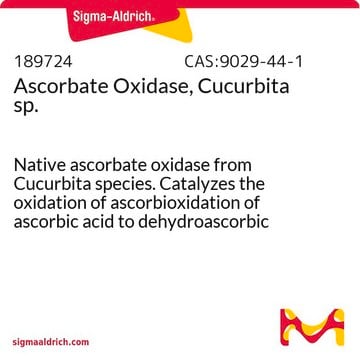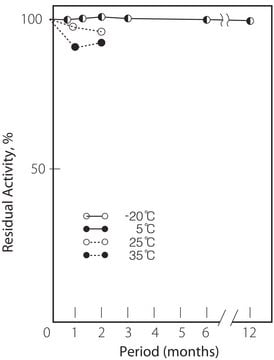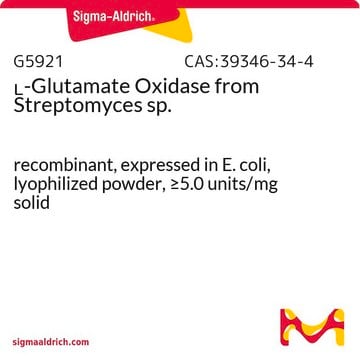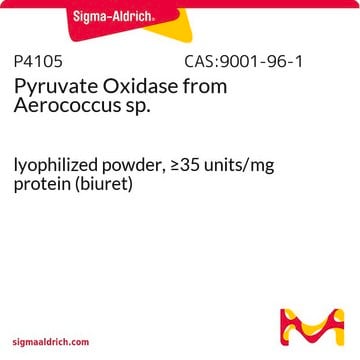A0157
Ascorbate Oxidase from Cucurbita sp.
lyophilized powder, 1,000-3,000 units/mg protein
Sinónimos:
L-Ascorbate:oxygen oxidoreductase, Ascorbase
About This Item
Productos recomendados
biological source
plant (Cucurbita spp.)
Quality Level
form
lyophilized powder
specific activity
1,000-3,000 units/mg protein
storage temp.
2-8°C
¿Está buscando productos similares? Visita Guía de comparación de productos
General description
Application
- as a supplement in the culture medium for differentiation into osteoblasts
- to oxidize ascorbic acid producing monodehydroascorbate in monodehydroascorbate reductase assay
- in determining ascorbate (AsA) and dehydroascorbate (DHA) concentrations
Biochem/physiol Actions
Unit Definition
Physical form
signalword
Danger
hcodes
pcodes
Hazard Classifications
Resp. Sens. 1
Storage Class
11 - Combustible Solids
wgk_germany
WGK 1
flash_point_f
Not applicable
flash_point_c
Not applicable
ppe
Eyeshields, Gloves, type N95 (US)
Certificados de análisis (COA)
Busque Certificados de análisis (COA) introduciendo el número de lote del producto. Los números de lote se encuentran en la etiqueta del producto después de las palabras «Lot» o «Batch»
¿Ya tiene este producto?
Encuentre la documentación para los productos que ha comprado recientemente en la Biblioteca de documentos.
Los clientes también vieron
Nuestro equipo de científicos tiene experiencia en todas las áreas de investigación: Ciencias de la vida, Ciencia de los materiales, Síntesis química, Cromatografía, Analítica y muchas otras.
Póngase en contacto con el Servicio técnico















